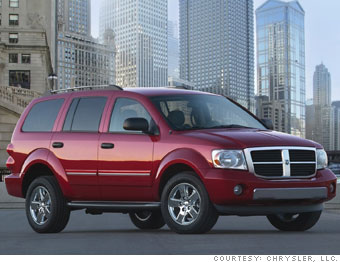The Durango Hybrid has the same hybrid system used in the General Motors' Chevy Tahoe. The system was developed by a team of engineers from GM, BMW and the old DaimlerChrysler.
While the mechanical parts of the system -- except for the engine, of course -- are the same, the software that runs the system can be programmed differently for each vehicle. That's part of the reason the Durango feels so different to drive from the Tahoe.
It probably helps that the Durango is smaller and lighter than the Tahoe while its gasoline engine offers a little more pulling power. Beyond that, the Durango seems more set up for a quick take-off than does the burlier Tahoe. The ride is smooth enough, but the Durango feels more loose-legged and wallowing than the bigger Tahoe and maximum towing capacity is 250 pounds less.
If you want a nicer-looking SUV with a much nicer-looking interior -- like most Dodges, the Durango interior puts function way, way over form -- you can spend a little more for the Chrysler Aspen Hybrid.
Since official EPA fuel economy estimates aren't available yet, it's impossible to fairly estimate ownership costs for this SUV. Given a smaller cost differential between the hybrid and non-hybrid versions and fuel economy that's expected to be similar, the Durango should offer at least a little more financial benefit than the Tahoe, but we don't know for sure, yet.
More galleries

